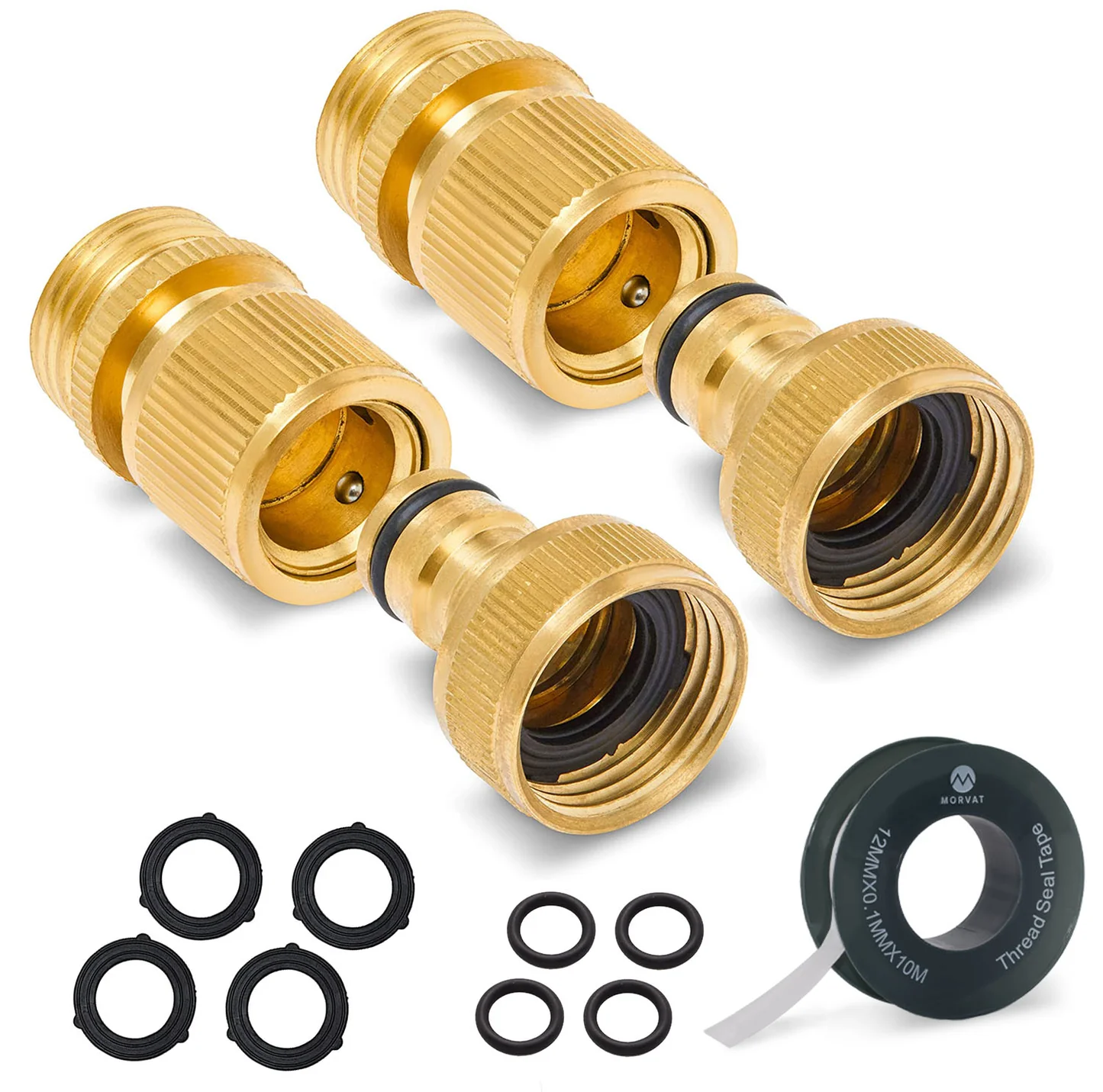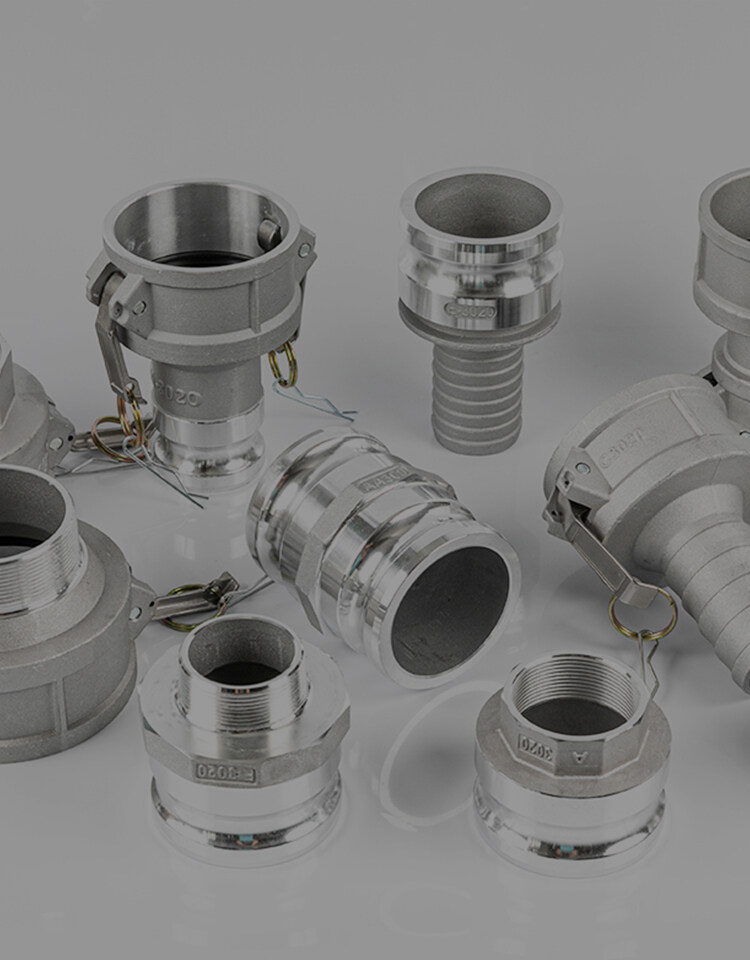Error de formato de correo electrónico
emailCannotEmpty
emailDoesExist
pwdLetterLimtTip
inconsistentPwd
pwdLetterLimtTip
inconsistentPwd

Noticias
Aquí, puedes describir un texto que quieres expresar

The Ultimate Guide to Hydraulic Quick Connect Coupler: Applications, Benefits, and Selection
Hydraulic systems are the lifeblood of many industrial applications, providing the necessary power to operate machinery and equipment with precision and efficiency. At the heart of these systems lies a critical component that ensures seamless operation and connectivity – the hydraulic quick connect coupler. This comprehensive guide will delve into the world of hydraulic quick connect couplers, exploring their applications, benefits, and how to select the right one for your needs.
Understanding Hydraulic Quick Connect Couplers:
Hydraulic quick connect couplers are marvels of engineering designed to facilitate the rapid joining and separation of hydraulic lines. These components are essential for systems that require frequent changes or maintenance, providing a means to connect hoses, pipes, and other fittings quickly and securely without the need for complex tools or prolonged downtime. The robust construction of these couplers ensures they can handle the high pressures typical of hydraulic systems while maintaining a leak-free seal.
The Role of Quick Connect Couplings in Hydraulic Systems:
In the realm of hydraulics, time is often synonymous with productivity. Quick connect couplings serve a vital role in reducing the time it takes to switch out lines or components, thereby minimizing interruptions to the workflow. They also play a significant part in maintaining the integrity of the hydraulic fluid by preventing contamination that can occur during disconnection and reconnection. The ease of use provided by these couplings means that even operators with minimal training can perform these tasks efficiently and safely.
Types of Hydraulic Quick Connect Couplers:
Each type serves a specific purpose and is designed to meet the demands of various applications:
Thread-to-Connect Couplers: These couplers are known for their durability and are often used in applications where vibration is a concern, as the threaded connection helps to prevent accidental disconnection.
Push-to-Connect Couplers: Ideal for rapid changes, these couplers allow for hose connections to be made with a simple push, which is perfect for applications with frequent hose changes.
Flat Face Couplers: These are designed to minimize fluid spillage upon disconnection, making them environmentally friendly and suitable for applications where cleanliness is paramount.
Screw-to-Connect Couplers: Offering a highly secure connection, these couplers are used in applications where there is a risk of high-impact or where disconnection could lead to severe consequences.
The Advantages of Using a Quick Connect Coupler:
The integration into hydraulic systems offers a multitude of advantages that can significantly enhance operational efficiency, safety, and equipment longevity. Here are some of the key benefits of using a quick connect coupler:
1. Time-Saving Connections and Disconnections:
The couplers are designed for speed. They allow for the rapid connection and disconnection of hydraulic lines, which is invaluable during equipment changeovers, maintenance, or emergency shutdowns. This swift action reduces downtime and keeps productivity high.
2. Enhanced Safety:
Safety is paramount in any industrial setting. The couplers minimize the risk of fluid leaks that can lead to slip hazards or environmental contamination. By providing a secure and reliable connection, these couplers protect operators from exposure to potentially harmful hydraulic fluids and reduce the risk of accidents.
3. Leak Prevention:
A well-designed coupler offers excellent sealing capabilities, which is crucial for maintaining system pressure and preventing fluid loss. This leak-proof performance is essential for the proper functioning of hydraulic systems and helps to avoid the costs associated with fluid cleanup and replacement.
4. Easy Operation:
The couplers are user-friendly and do not require specialized tools or extensive training to operate. This ease of use ensures that connections can be made quickly and correctly, even by less experienced personnel, which can be a significant advantage in fast-paced work environments.
5. Reduced Contamination Risk:
When disconnecting hydraulic lines, there is a risk of introducing contaminants into the system. The couplers are designed to minimize this risk by providing a clean disconnect, which helps to maintain the purity of the hydraulic fluid and protect sensitive system components.
6. Versatility:
The couplers come in various sizes, materials, and designs to suit different applications and fluids. This versatility allows them to be used across a wide range of industries and in diverse operating conditions, from mobile equipment to industrial machinery.
7. Improved Equipment Longevity:
By ensuring secure and stable connections, the connect couplers reduce the wear and tear on hoses and fittings that can occur with repeated manual connections. This can extend the life of the hydraulic components and reduce the frequency of repairs or replacements.
8. Cost-Effectiveness:
Although there may be an initial investment in high-quality connect couplers, the long-term savings are significant. Reduced maintenance time, lower risk of fluid loss, and extended equipment lifespan all contribute to a lower total cost of ownership.
9. Environmental Compliance:
With increasing regulations on environmental protection, the spill-free design can help organizations comply with environmental standards and avoid potential fines or cleanup costs.
10. Consistent Performance:
The connect couplers are engineered to provide consistent performance under varying pressures and temperatures. This reliability is crucial for applications where precision and repeatability are required.
Selecting the Right Quick Connect Coupler for Your Application:
Selecting the right connect coupler for your hydraulic system is a critical decision that can impact the efficiency, safety, and longevity of your equipment. To make an informed choice, consider the following factors:
1. Operating Pressure and Temperature:
Assess the maximum operating pressure and temperature range of your hydraulic system. The connect couplers are rated for specific pressures and temperatures, and choosing a coupler that can withstand your system’s requirements is essential to prevent failures and ensure safety.
2. Flow Rate Requirements:
The flow rate, typically measured in gallons per minute (GPM) or liters per minute (LPM), dictates the size of the coupler needed. A coupler that is too small can restrict flow and reduce system efficiency, while one that is too large may be unnecessarily bulky and expensive.
3. Compatibility with Hydraulic Fluids:
Different hydraulic fluids have varying chemical compositions that can affect the materials used in quick connect couplers. Ensure that the coupler material, such as steel, brass, or stainless steel, is compatible with the type of hydraulic fluid used in your system to avoid corrosion and degradation.
4. Environmental Conditions:
Consider the environmental conditions in which the coupler will operate. Factors such as exposure to corrosive substances, extreme temperatures, UV radiation, and abrasive materials can influence the choice of coupler material and sealing type.
5. Connection and Disconnection Frequency:
If your application requires frequent coupling and uncoupling, choose a quick connect coupler that is designed for easy operation and can withstand repeated use without significant wear.
6. Space Constraints:
In tight spaces, the physical dimensions of the coupler can be a limiting factor. Compact designs may be necessary, and the ease of connecting and disconnecting in confined areas should be considered.
7. Seal Material:
The seal or gasket material within the coupler must be suitable for the hydraulic fluid and the operating temperature. Common materials include nitrile, Viton, and PTFE. Each has its own advantages and limitations, so select the one that best matches your application’s requirements.
8. Valve Design:
Quick connect couplers can have different valve designs, such as poppet or flat-face. Poppet valves are common and provide a reliable seal, while flat-face valves are designed to minimize fluid loss upon disconnection. The choice depends on the importance of spillage control in your application.
9. Industry Standards and Certifications:
Ensure that the quick connect coupler adheres to relevant industry standards and certifications, which can indicate quality and performance. Standards such as ISO 16028 for flat-face couplers or ISO 7241 for general-purpose couplers are commonly referenced.
10. Manufacturer Reputation and Support:
Choose a coupler from a reputable manufacturer that offers good customer support. Quality manufacturers will provide detailed product specifications, performance data, and assistance with selecting the right coupler for your needs.
Cam and Groove Fittings – A Closer Look:
Cam and groove fittings, or camlock couplings, are distinguished by their ease of use and the speed with which they can be connected and disconnected. These fittings are commonly used in applications where hoses need to be frequently moved or replaced. The cam and groove design allows for a secure connection that can be achieved with minimal effort, making it a popular choice in industries ranging from agriculture to chemical processing.
The Functionality of Cam and Groove Coupling:
The cam and groove coupling system is ingeniously simple. It consists of a male (groove) adapter and a female (cam) coupler. The adapter is inserted into the coupler, and the cam arms are then closed under normal hand pressure to complete the connection. This creates a tight seal that can withstand significant pressure without the need for additional tools or tightening.
The Versatility of Cam and Groove:
The versatility of cam and groove fittings lies in their ability to be used with a wide range of fluids and in various environments. They are available in multiple materials, each suited to different types of fluids and working conditions. For example, stainless steel fittings are ideal for corrosive environments, while polypropylene fittings are suitable for less aggressive fluids.
Maintenance and Care for Your Quick Connect Coupler:
Maintaining and caring for your hydraulic quick connect couplers is crucial to ensure their longevity and proper functioning. Here are some detailed maintenance and care guidelines:
1. Regular Inspection:
Conduct routine inspections of the couplers for any signs of wear, damage, or corrosion. Check for cracks, dents, or any deformities on the coupler body. Inspect the sealing surfaces for scratches or gouging that could cause leaks. Ensure that the locking mechanism operates smoothly and securely.
2. Cleanliness:
Keep the couplers clean to prevent contamination of the hydraulic system. Before connecting, wipe down the coupler ends to remove any dirt, grit, or debris. After disconnecting, clean the couplers again before storage or reconnection. Use clean cloths and appropriate cleaning solutions that won’t degrade the coupler materials.
3. Proper Connection and Disconnection Techniques:
Always follow the manufacturer’s guidelines for connecting and disconnecting the couplers. Avoid using excessive force, which can damage the coupler components. Make sure the system is depressurized before disconnecting to prevent fluid spray or spillage.
4. Lubrication:
Lubricate the coupler’s moving parts, such as the sleeve or locking balls, to ensure smooth operation. Use a lubricant that is compatible with the coupler materials and the hydraulic fluid. Avoid over-lubricating, which can attract dirt and lead to contamination.
5. Seal and O-Ring Maintenance:
Inspect the seals and O-rings for any signs of wear or damage. Replace them if they show any evidence of deterioration, such as cracking or deformation. Always use the correct replacement parts that meet the manufacturer’s specifications.
6. Avoid Cross-Threaded Connections:
For threaded couplers, take care to align the threads properly to avoid cross-threading. Cross-threading can damage the threads and compromise the connection, leading to leaks and reduced coupler life.
7. Storage:
When not in use, store the couplers in a clean, dry environment. Protect the coupler ends with dust caps or plugs to prevent the ingress of contaminants. Avoid exposing the couplers to extreme temperatures or corrosive chemicals during storage.
8. Prevent Unnecessary Strain:
Do not use the hoses or couplers to pull or support the weight of equipment. This can stress the coupler and lead to premature failure. Ensure that hoses have enough slack to prevent tension on the coupler.
9. Use Dust Caps and Plugs:
Always use dust caps and plugs on the coupler ends when they are not connected. This simple practice can prevent dirt, dust, and other contaminants from entering the coupler and the hydraulic system.
10. Adhere to Pressure Ratings:
Never exceed the rated pressure for the couplers. Subjecting the couplers to pressures beyond their rated capacity can cause damage and may lead to dangerous failures.
11. Personnel Training:
Ensure that all operators are trained in the correct use and maintenance. Proper training can prevent mishandling, which is a common cause of coupler damage and system contamination.
Troubleshooting Common Issues with Quick Connect Couplers:
They are designed to be reliable components of hydraulic systems, but like any mechanical device, they can encounter issues. Here are some common problems with quick connect couplers and troubleshooting tips to resolve them:
1. Difficulty Connecting or Disconnecting:
Cause: Dirt or debris on the coupler’s surface, damaged threads, or misalignment.
Solution: Clean the coupler ends thoroughly. Inspect and repair any damaged threads. Ensure proper alignment during connection.
2. Leaks at the Connection Point:
Cause: Worn or damaged seals, improper connection, or a cracked coupler body.
Solution: Replace the seals or O-rings with new ones that match the manufacturer’s specifications. Make sure the connection is secure and correctly engaged. If the coupler body is cracked, replace the entire coupler.
3. Reduced Flow or Pressure Drop:
Cause: Partial blockage within the coupler, a valve not fully opening, or a coupler size mismatch.
Solution: Inspect the coupler for any debris and clean it out. Check that the valve is operating correctly and opening fully. Ensure the coupler size is appropriate for the system’s flow rate.
4. Coupler Will Not Lock in Place:
Cause: Damaged locking mechanism, foreign objects in the locking grooves, or wear.
Solution: Clear any debris from the locking grooves. Inspect the locking mechanism for damage and replace parts as necessary. If wear is significant, consider replacing the coupler.
5. Excessive Wear or Corrosion:
Cause: Harsh environmental conditions, use with incompatible fluids, or frequent coupling/uncoupling cycles.
Solution: Select couplers made from materials that are better suited to the operating environment and fluid compatibility. Reduce the frequency of coupling and uncoupling if possible, or use couplers designed for high-cycle applications.
6. Unintended Disconnection:
Cause: Vibration, impact, or insufficient locking.
Solution: Ensure the coupler is fully engaged and locked in place. Consider using couplers with additional locking features or safety clips. Minimize exposure to vibration and impact.
7. Contamination of the Hydraulic System:
Cause: Ingress of dirt or debris during connection/disconnection or through damaged seals.
Solution: Use dust caps and plugs to protect the coupler ends when disconnected. Replace damaged seals promptly. Follow clean connection practices.
8. Inability to Achieve a Tight Seal:
Cause: Deformed or damaged sealing surfaces, incorrect seal material, or improper installation.
Solution: Inspect the sealing surfaces for damage and replace the coupler if necessary. Ensure the correct seal material is used for the hydraulic fluid and operating conditions. Check that the seals are installed correctly.
9. Valve Sticking or Not Operating Smoothly:
Cause: Lack of lubrication, contamination, or damaged valve components.
Solution: Lubricate the valve mechanism according to the manufacturer’s recommendations. Clean the valve components, and replace any damaged parts.
Conclusion:
Hydraulic quick connect couplers are indispensable components in modern hydraulic systems, offering efficiency, safety, and reliability. By understanding the different types of couplers, their applications, and how to maintain them, you can ensure that your hydraulic system operates at its best. Whether you’re using standard quick connect couplings or specialized cam and groove fittings, selecting the right coupler is key to a successful and productive operation.

